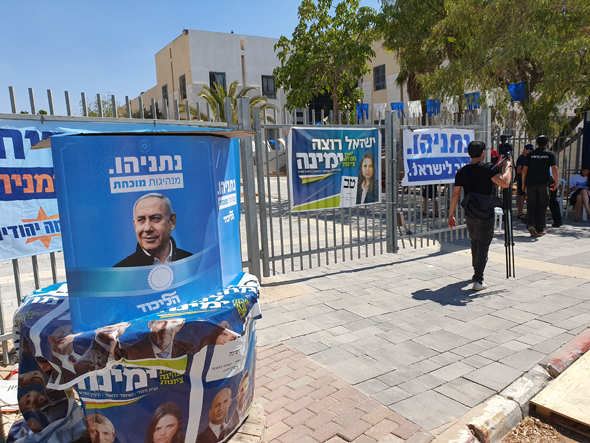
Election
Israeli Parties Slash Advertising Budgets for Do-Over Election
As engaging as the results may be, a look at political advertising budgets for the year’s first and second elections offers a glimpse at the general fatigue of both candidates and voters
The results of Israel’s general election held Tuesday, less than six months after its previous election, are still unclear. Though the counting of the votes continues and will only become official on Wednesday, it is already evident that both contenders to the prime minister’s seat will find it extremely difficult to form a government. As engaging as the results may be, a look at the advertising budgets for political parties ahead of the year’s first and second elections offers a glimpse at the general fatigue of both candidates and voters faced with yet another pricey election process.
Israeli political parties have significantly cut down on their advertising budgets for the second election of 2019, according to data from Tel Aviv-based advertising and press monitoring company Ifat Advertising Monitoring Ltd. Prime Minister Benjamin Netanyahu's Likud party, which held the record spending NIS 6 million (approximately $1.7 million) on ads on digital media, printed press, and billboards during April’s campaign, decreased its budget by about 40%, only spending around NIS 3.6 million (approximately $1 million) ahead of round two. This time, Likud focused mainly on written press and digital ads. Ifat’s data spanned from February to April 9 for the previous election, and July to September 17 for this week’s election. For April’s election, Likud’s main contender, Blue and White, spent about NIS 3.5 million (approximately $995,000) on ads. For September’s campaign, it made a slight increase going up to NIS 3.6 million (approximately $1 million). As of now, after 98% of the votes have been counted, Blue and White has won 33 seats in parliament, two more than Likud.Related stories
Nationalist party Yisrael Beiteinu managed to increase its power by three seats to eight on Tuesday despite slashing its ad budget from NIS 800,000 (approximately $226,000) to NIS 250,000 (approximately $70,700).

1 Comment Add Comment